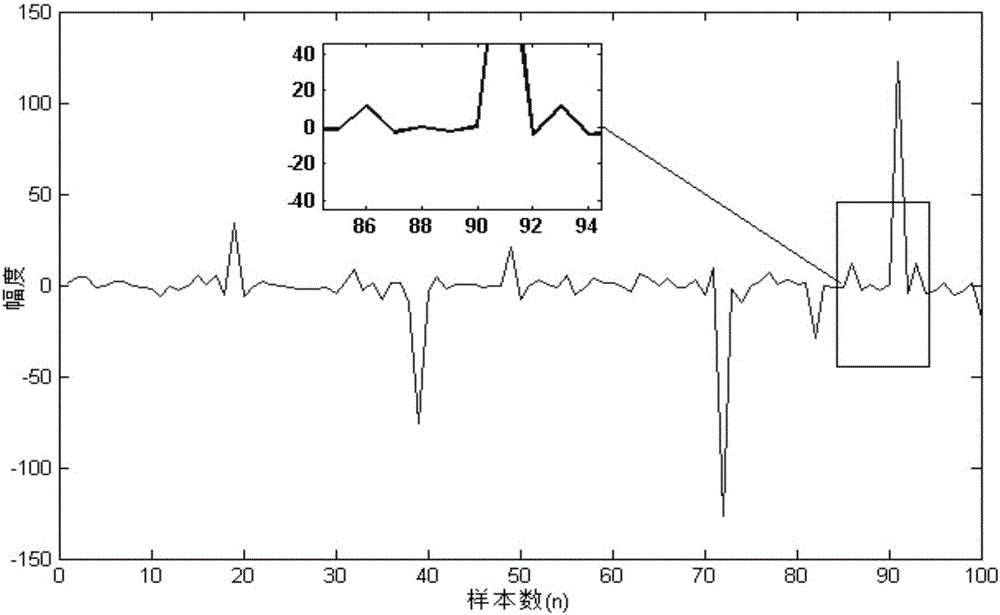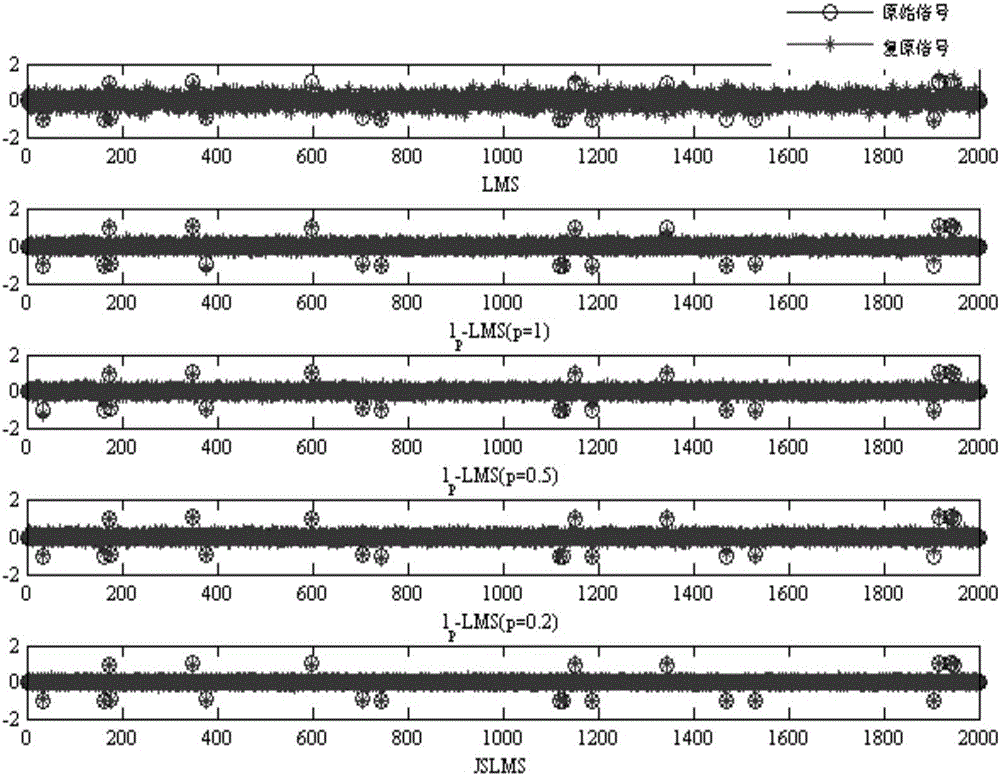Self-adaptive combination filtering method under impact noise condition
A technology of impact noise and joint filtering, applied in the direction of adaptive network, impedance network, electrical components, etc., can solve the problem of not using the approximate sparse characteristics of impact noise
- Summary
- Abstract
- Description
- Claims
- Application Information
AI Technical Summary
Problems solved by technology
Method used
Image
Examples
Embodiment Construction
[0054] The technical solutions in the embodiments of the present invention will be described clearly and in detail below with reference to the drawings in the embodiments of the present invention. The described embodiments are only some of the embodiments of the invention.
[0055] Technical scheme of the present invention is as follows:
[0056] 1. Adaptive joint sparse filtering algorithm under impact noise.
[0057] The main difference between the α-stable distribution and the Gaussian distribution is the tailing phenomenon, which is why the α-stable distribution is very suitable for describing the impact noise. In addition, the stable distribution is also very easy to control, and its probability density function is expressed as ψ(t)=exp{jut-γ|t| α [1+jβsgn(t)f(t,α)]},
[0058] in 00.
[0059] · α is the characteristic index, indicating the thickness of the tail of the distribution. The smaller the value of α, the thicker the tail and the stronger the impact. When ...
PUM
 Login to View More
Login to View More Abstract
Description
Claims
Application Information
 Login to View More
Login to View More - R&D
- Intellectual Property
- Life Sciences
- Materials
- Tech Scout
- Unparalleled Data Quality
- Higher Quality Content
- 60% Fewer Hallucinations
Browse by: Latest US Patents, China's latest patents, Technical Efficacy Thesaurus, Application Domain, Technology Topic, Popular Technical Reports.
© 2025 PatSnap. All rights reserved.Legal|Privacy policy|Modern Slavery Act Transparency Statement|Sitemap|About US| Contact US: help@patsnap.com



